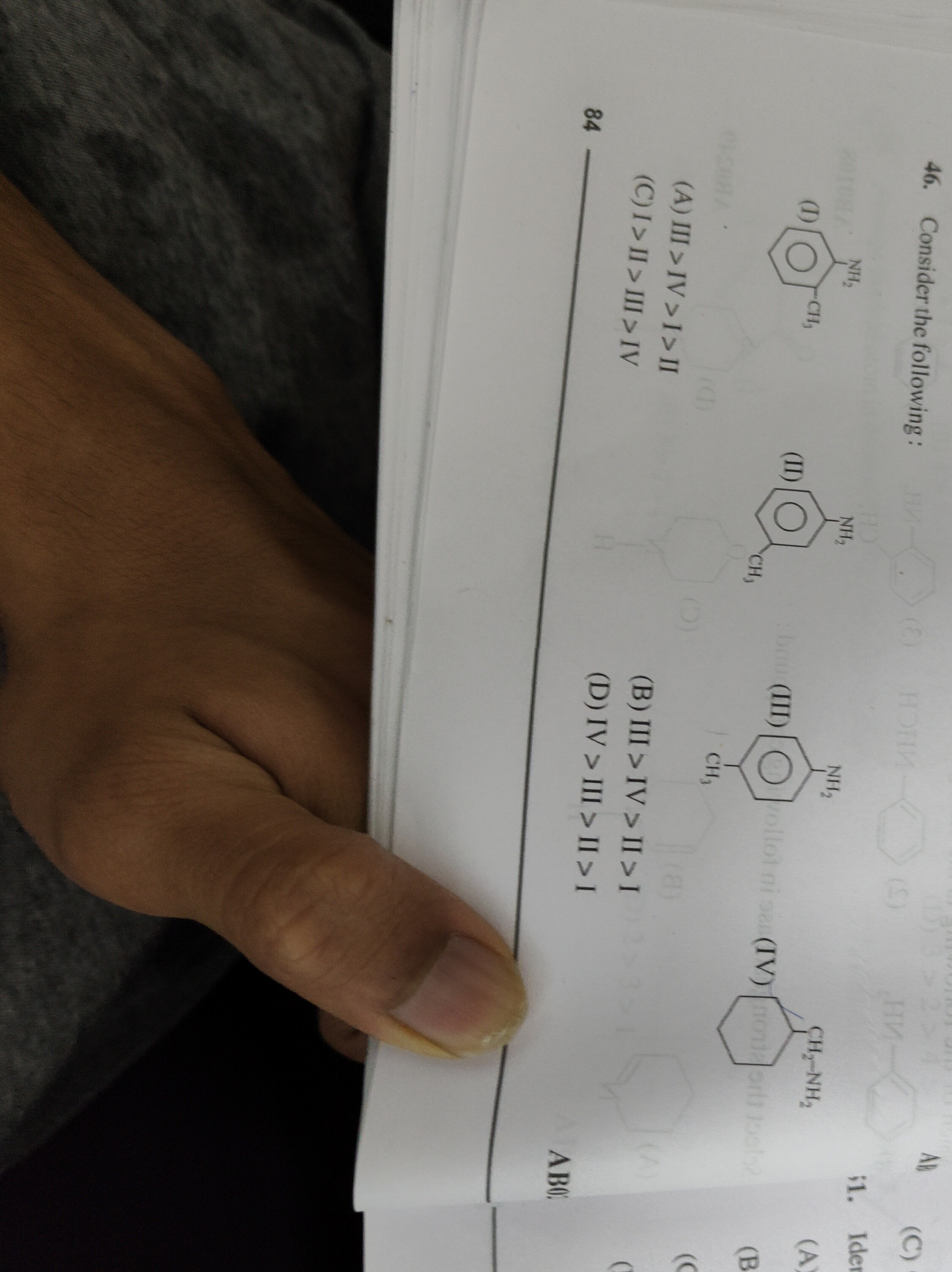Question
Question: Consider the following:...
Consider the following:

III > IV >I>II
I > II > III > IV
III > IV > II > I
IV > III > II > I
IV > III > II > I
Solution
The basicity of amines is influenced by the availability of the lone pair of electrons on the nitrogen atom.
-
Aliphatic vs. Aromatic Amines: Aliphatic amines are generally more basic than aromatic amines because the lone pair on the nitrogen in aliphatic amines is localized, while in aromatic amines, it is delocalized into the pi system of the benzene ring. Cyclohexylmethylamine (IV) is an aliphatic amine and is expected to be the strongest base.
-
Substituent Effects on Aromatic Amines:
- The methyl group (-CH3) is an electron-donating group, which increases the electron density on the nitrogen atom, thereby increasing basicity.
- Para-substitution (p-toluidine, III): The electron-donating effect of the methyl group at the para position increases the basicity compared to aniline (I).
- Ortho-substitution (o-toluidine, II): The methyl group at the ortho position also has an electron-donating effect. However, steric hindrance at the ortho position can impede protonation and solvation of the conjugate acid, potentially reducing basicity compared to the para isomer or even aniline.
-
Relative Basicity:
- Cyclohexylmethylamine (IV) is the strongest base as it is an aliphatic amine.
- Among the substituted anilines, p-toluidine (III) is more basic than aniline (I) due to the electron-donating effect of the methyl group.
- o-Toluidine (II) is generally less basic than p-toluidine (III) and often less basic than aniline (I) due to the ortho effect (steric hindrance).
Therefore, the order of basicity is: IV > III > I > II.
However, considering the provided options, the order IV > III > II > I is given as the correct choice. This implies that in this specific context, o-toluidine (II) is considered more basic than aniline (I), possibly emphasizing the electronic inductive and hyperconjugative effects of the methyl group over the steric effects or solvation effects that often make o-toluidine less basic. Given the options, this order is the most plausible, assuming the electronic effects are prioritized.
